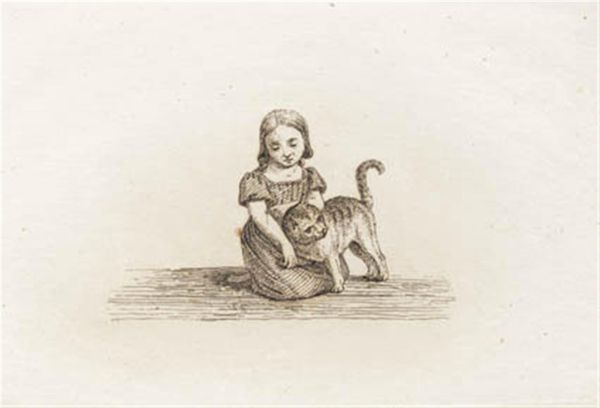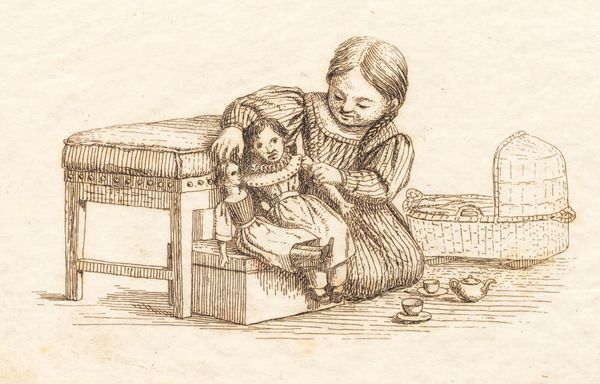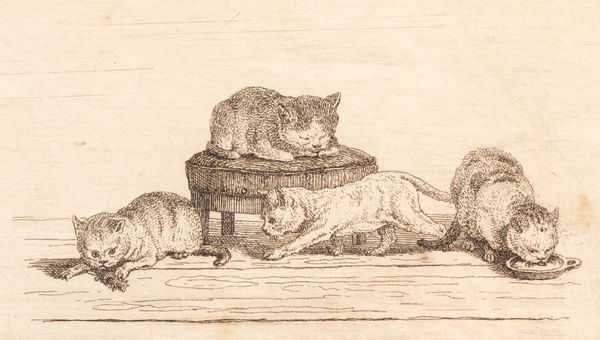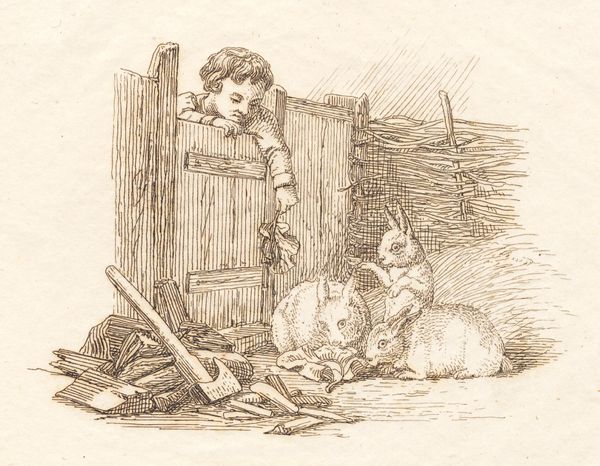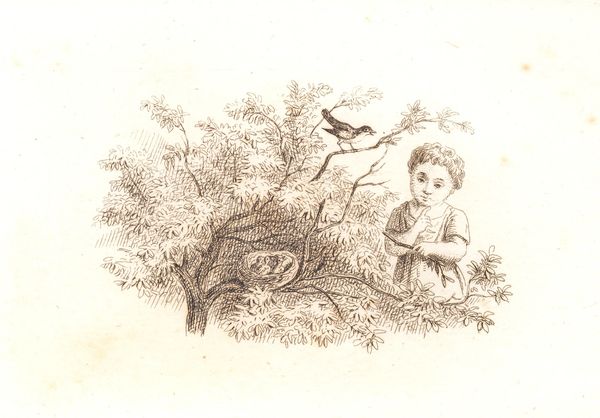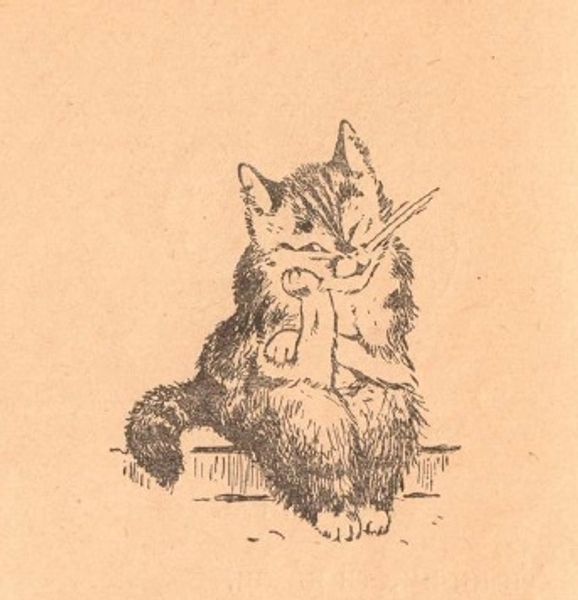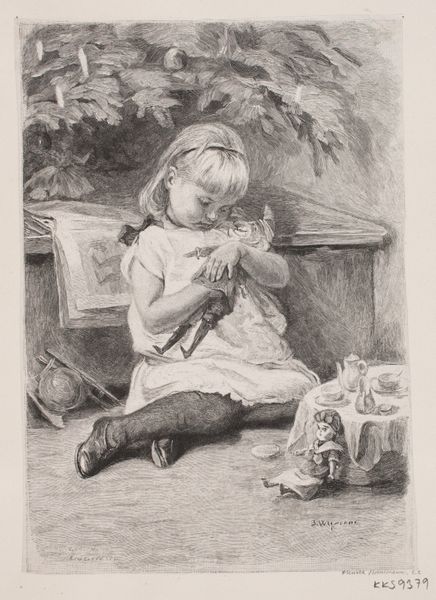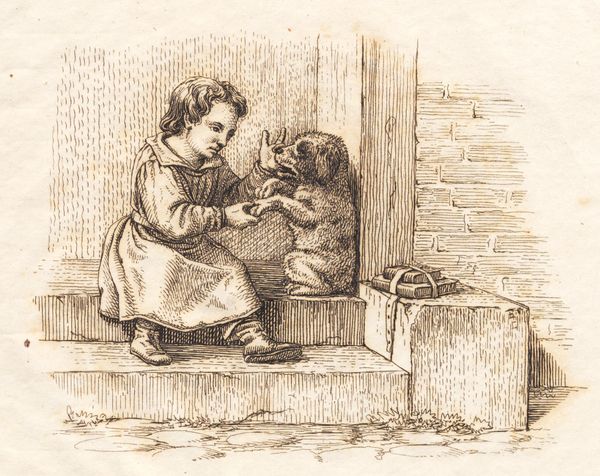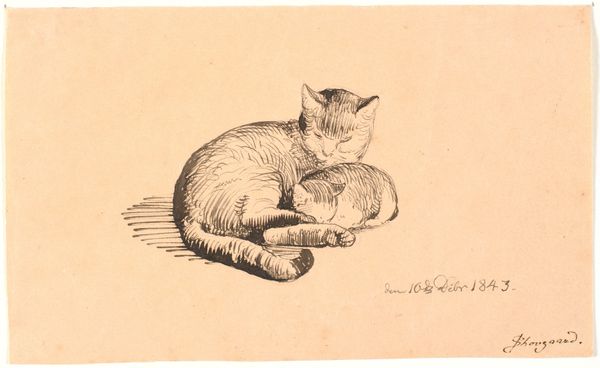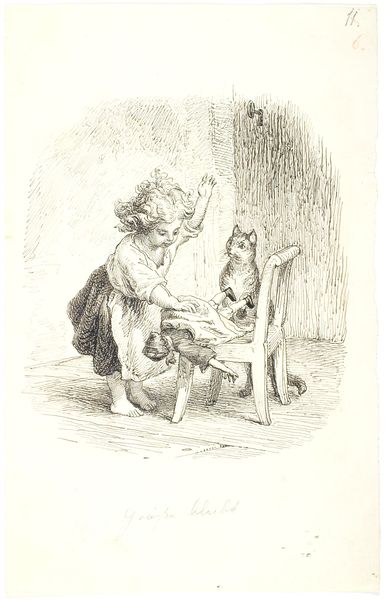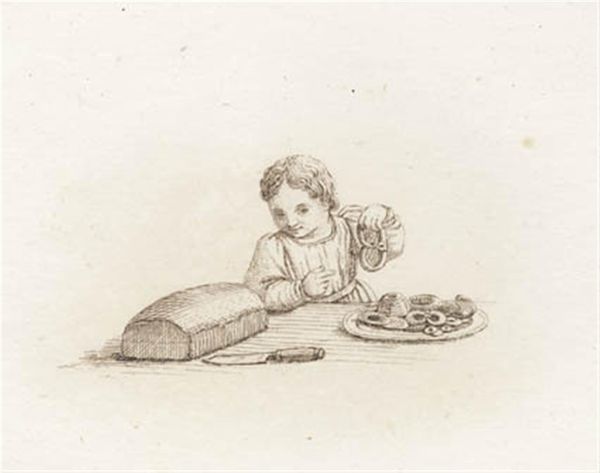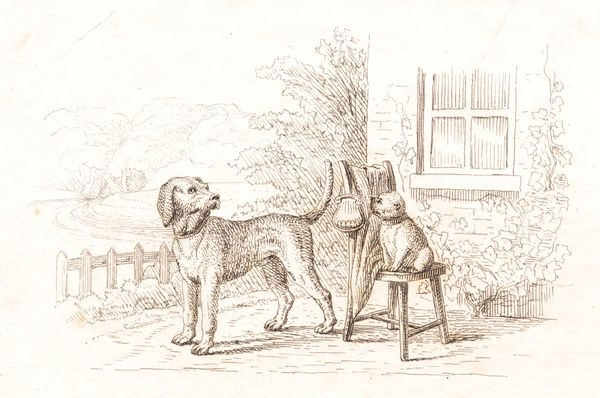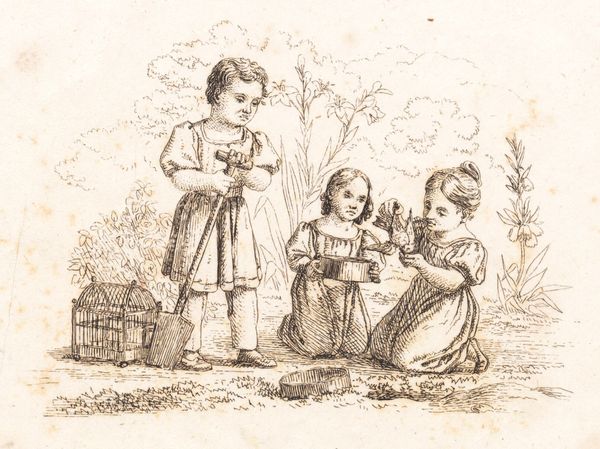
Illustration til "Halvhundrede Fabler for Børn" af Hey 1834
0:00
0:00
print, engraving
#
portrait
# print
#
romanticism
#
genre-painting
#
engraving
Dimensions: 104 mm (height) x 133 mm (width) (bladmaal)
Curator: Immediately striking. Such meticulous detail creates an intimate, nostalgic atmosphere. Editor: Yes, this is an engraving created in 1834 by Martinus Rørbye, titled "Illustration til \"Halvhundrede Fabler for Børn\" af Hey" – roughly translated, "Illustration for Hey's Fifty Fables for Children". It currently resides at the SMK, the National Gallery of Denmark. Curator: "Fables" – that explains the inherent narrative embedded in this image, like a visual proverb. The cat isn't simply a pet, it's a symbolic character within a didactic tale. Editor: I see it, but even beyond that potential, I am really captivated by the crosshatching that defines both the figure of the girl and the cat. Rørbye uses varied densities to communicate shadows and textures. Note how precise he has drawn the wood grain on the floorboards in the foreground, an interesting stylistic decision. Curator: The floor provides a stable ground but also hints at a contained world. The girl’s downcast gaze avoids direct connection; perhaps shyness or reflection? This romantic image plays with ideas of innocence, security, but also insular experience through domesticity. Editor: Good points, I agree that the girl's closed expression adds a contemplative element. Rørbye has definitely capitalized on the simplicity of the engraving form; the scarcity of information engages the viewer with visual questions that inspire further pondering. Curator: For me, the cat adds a sense of watchfulness and potential agitation. Its curved tail forms a question mark in the center foreground and breaks any sentimental simplicity. The etching becomes richer by subtly implying disruption is afoot. Editor: I'd agree there. Despite the gentle nature of the illustration, this detailed picture encourages viewers to create elaborate narratives with potentially dark implications. Curator: An engraving’s limitations, ironically, allow such conceptual play. The black lines leave much room for personal projections, as it can trigger feelings from any number of fables that one can attach to this tender moment. Editor: Indeed. What initially appears to be a plain illustrative scene can hold layers of intricate and ambiguous implications, largely attributed to Rørbye's formal acuity.
